Ethical AI Roadmap: A Practical Guide for Responsible AI Implementation
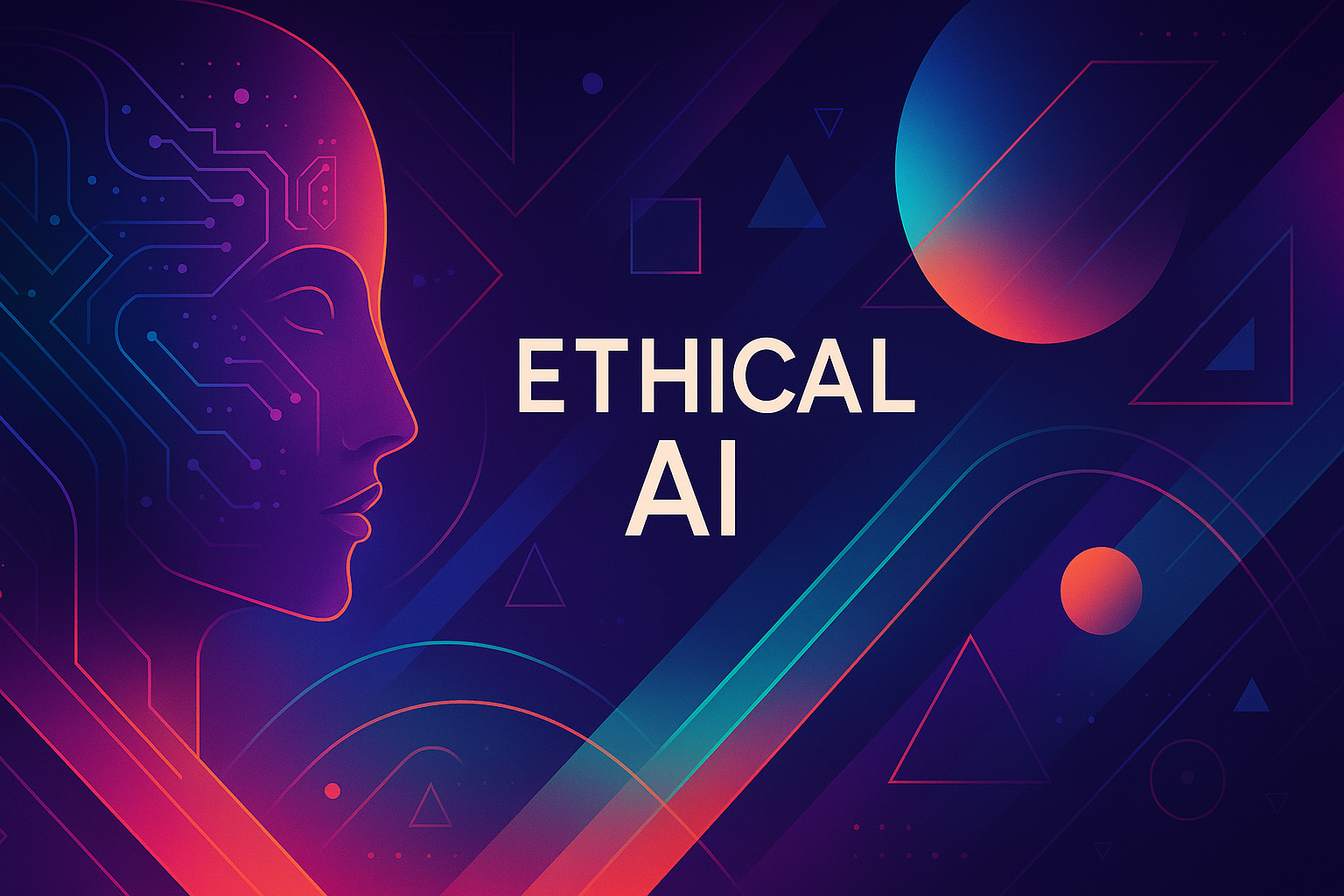
Introduction: Why Ethical AI Matters
In a world increasingly shaped by algorithms and automation, the importance of ethical AI has never been more pronounced. We're at a critical juncture where the decisions we make about developing and deploying AI will define not only our technological future but also the very fabric of our society. As AI systems become more sophisticated and integrated into our daily lives, from healthcare and finance to criminal justice and education, the potential for both immense benefit and significant harm grows exponentially.
The Business Case for Ethical AI
While ethical considerations are often framed as a matter of social responsibility, they also represent a powerful business imperative. Building trust and transparency in AI systems isn't just the right thing to do; it's also a smart business strategy. Here’s why:
Enhanced Customer Loyalty: Consumers are increasingly discerning about the technologies they interact with. Companies that prioritize ethical AI practices are more likely to earn and retain customer loyalty. People want to know that the AI systems they're engaging with are fair, unbiased, and respect their privacy.
Improved Brand Reputation: In today's hyper-connected world, a company's reputation is its most valuable asset. Ethical AI practices can significantly enhance a brand's image, positioning it as a responsible and forward-thinking organization.
Competitive Advantage: As ethical AI becomes more mainstream, companies that have already invested in building ethical frameworks and transparent systems will have a distinct competitive advantage. They will be better positioned to attract talent, secure partnerships, and gain market share.
Risk Mitigation: By proactively addressing ethical concerns, businesses can mitigate the risks associated with AI, such as bias, discrimination, and privacy violations. This can help avoid costly legal battles, regulatory scrutiny, and reputational damage.
For example, consider DeepL, an AI-powered translation tool known for its accuracy and nuanced understanding of language. A commitment to data privacy and security helps build user trust in the tool.
The High Cost of Ethical AI Failures
The consequences of neglecting ethical considerations in AI can be severe. Ethical AI failures can have a devastating impact on brand reputation, leading to boycotts, loss of customers, and a decline in investor confidence. Moreover, these failures can perpetuate and amplify existing societal inequalities, disproportionately affecting marginalized groups. AI systems that exhibit bias in hiring, lending, or criminal justice can reinforce discriminatory practices and undermine social progress. Consider the potential fallout from an AI-powered hiring tool that consistently favors one demographic over another – the damage to both the company's image and the lives of affected individuals would be immense.

Long-Term Success Hinges on Ethics
Ethical considerations are not merely an afterthought or a compliance exercise; they are a fundamental component of long-term success in the age of AI. Companies that prioritize ethical AI are building a sustainable foundation for innovation and growth. They are creating systems that are not only powerful and efficient but also fair, transparent, and accountable. This approach fosters trust, enhances brand reputation, and ultimately drives long-term value creation. Embracing ethical AI is an investment in a future where technology serves humanity, rather than the other way around. To navigate this complex landscape, resources like the AI News section of our website offer valuable insights into current events and trends.
As we move forward, it's crucial to recognize that ethical AI is not a destination but an ongoing journey. It requires a continuous commitment to learning, adaptation, and collaboration. The following sections will provide a practical roadmap for implementing ethical AI principles in your organization, ensuring that your AI initiatives are aligned with your values and contribute to a better future for all.
Defining Ethical AI: Core Pillars and Common Misconceptions
Imagine AI as a powerful car – capable of incredible feats, but also potentially dangerous if not guided by a responsible driver and a clear set of rules. Defining ethical AI is like establishing those rules of the road, ensuring this technology benefits everyone safely and equitably.
The Four Pillars of Ethical AI

At its heart, ethical AI rests on four core principles, each vital for responsible development and deployment:
Fairness: AI systems should treat all individuals and groups equitably, without bias or discrimination. This means carefully examining the data used to train AI models, as biased data can lead to unfair outcomes. For instance, an AI-powered hiring tool trained on data predominantly featuring male candidates might unfairly disadvantage female applicants.
Accountability: Developers and deployers of AI systems must be held responsible for their actions and outcomes. This includes establishing clear lines of responsibility, implementing robust monitoring and auditing mechanisms, and having processes in place to address any harm caused by AI systems. Think of it like a doctor being accountable for a medical treatment - AI developers should be accountable for their creations. Weights & Biases, a popular tool for machine learning development, can help track experiments and make AI development more transparent.
Transparency: AI systems should be understandable and explainable. This means providing insights into how AI models make decisions, the data they rely on, and the potential biases they may contain. Transparency builds trust and allows for scrutiny, enabling us to identify and correct errors or biases. Tools like TensorFlow offer features to visualize model behavior and understand decision-making processes.
Privacy: AI systems must respect and protect individual privacy rights. This includes obtaining informed consent for data collection and use, implementing robust data security measures, and adhering to privacy regulations. The recent surge in AI tools raises legitimate privacy questions. It's crucial that the development and deployment of AI aligns with privacy-preserving best practices.
Understanding these core principles is crucial, but it’s also important to recognize that they are interconnected and often require careful balancing. For example, striving for greater transparency might sometimes require revealing sensitive information, potentially compromising privacy.
Debunking Common Misconceptions
Ethical AI is often misunderstood, leading to misconceptions that can hinder its responsible implementation. Let's debunk a few common ones:
Myth: Ethical AI is just about following the rules. While adhering to regulations is important, ethical AI goes beyond mere compliance. It requires a proactive and ongoing commitment to ethical values, even when there are no explicit rules in place. It's about doing what is right, not just what is legal.
Myth: AI can be perfectly unbiased. Complete objectivity in AI is a mirage. AI models are trained on data, and data reflects the biases present in the real world. The goal is not to eliminate bias entirely, but to identify, mitigate, and address it proactively. Furthermore, there are tools available to help detect and remove bias in your AI projects. For example, you can use GPTZero, an AI detection tool, to ensure that the content you are generating does not have harmful biases.
Myth: Ethical AI is only the responsibility of AI developers. Ethical AI is a shared responsibility, encompassing developers, policymakers, business leaders, and end-users. Everyone involved in the AI lifecycle has a role to play in ensuring its ethical development and use.
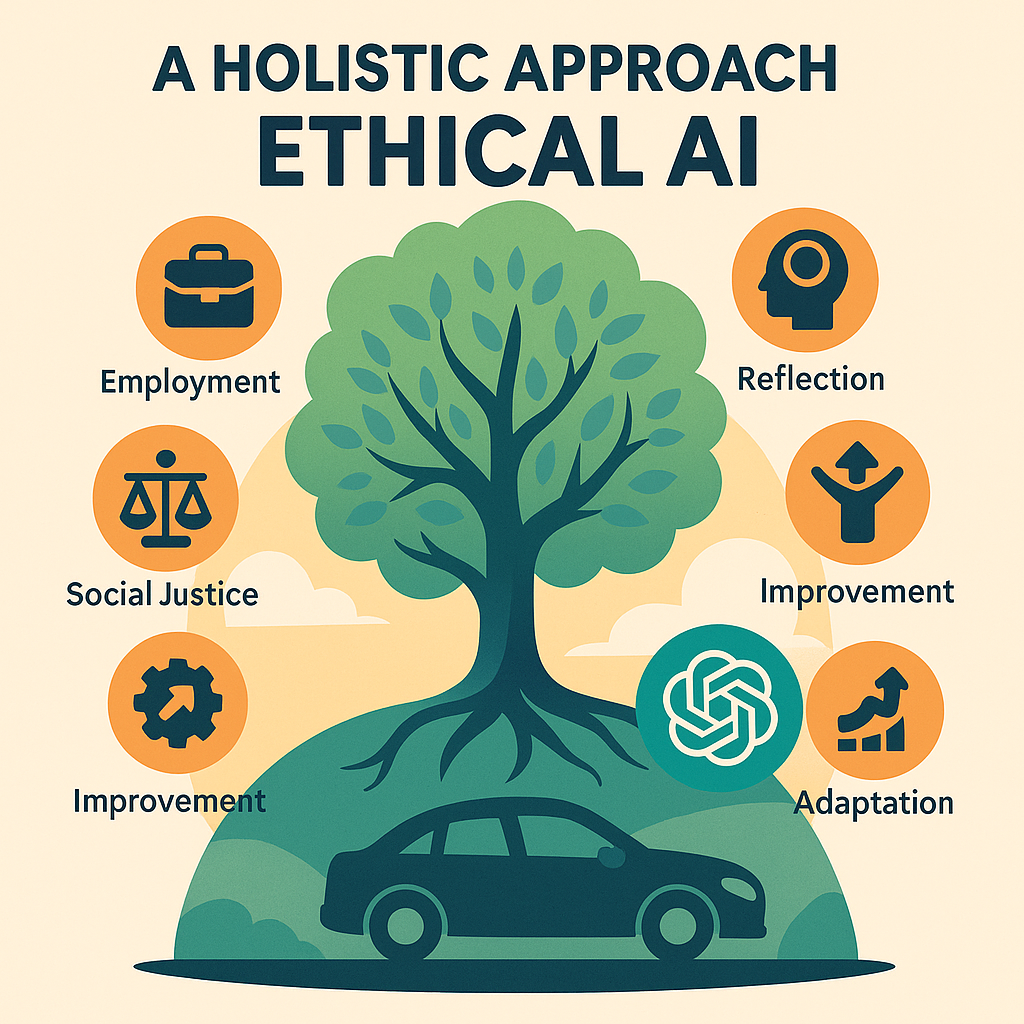
A Holistic Approach is Key
Ethical AI isn't a checklist to be completed, but a continuous journey of reflection, adaptation, and improvement. It demands a holistic approach, considering the broader societal impact of AI systems, including their potential effects on employment, social justice, and human autonomy. Taking the time to think through all these important factors allows for a higher success rate when using new AI tools. For example, ChatGPT, a powerful language model known for its versatility, can greatly assist in researching and brainstorming ethical considerations for your AI project.
By embracing the core pillars, addressing common misconceptions, and adopting a holistic perspective, we can pave the way for AI that truly benefits humanity. This sets the stage for building concrete strategies and frameworks, which we'll explore in the next section.
Strategic Planning & Stakeholder Alignment for Ethical AI
Ethical AI isn't just about doing what's right; it's about doing things the right way, from the very beginning. Let's dive into the strategic planning and stakeholder alignment needed to ensure your AI initiatives are both innovative and ethically sound.
Building a Cross-Functional Ethics Committee
Think of your ethics committee as the North Star for your AI projects, guiding them away from potential pitfalls. This isn't a task for the legal department alone; it requires a diverse team with varied expertise. Consider including:
AI Researchers and Engineers: Those building the models have crucial insights into their inner workings and potential biases.
Legal and Compliance Experts: They ensure alignment with regulations and ethical standards.
Business Leaders: They bring a practical perspective, ensuring ethical considerations don't stifle innovation.
Representatives from Affected Groups: Including voices from diverse backgrounds and communities impacted by your AI is crucial.
This committee should meet regularly, not just when a crisis arises. Their responsibilities include reviewing new AI projects, assessing potential ethical risks, and developing guidelines for responsible AI development and deployment. It's about embedding ethical considerations into the DNA of your AI projects from the outset.
Setting Measurable Ethics KPIs
What gets measured gets managed. Ethical considerations shouldn't be vague aspirations; they should be quantifiable goals. This is where Key Performance Indicators (KPIs) come in. Some examples include:
Bias Detection Rates: The percentage of models tested for bias, and the frequency with which biases are identified and mitigated.
Data Privacy Compliance: Metrics tracking adherence to data protection regulations like GDPR or CCPA. Reporting on percentage of data breaches, or successful audits.
Transparency Scores: Assessing how well the AI's decision-making processes are documented and understandable.
Stakeholder Satisfaction: Surveys and feedback mechanisms to gauge public perception and trust in your AI systems. Regular check-ins and reports to maintain accountability.
By setting these KPIs, you create a framework for continuous improvement and demonstrate a commitment to ethical AI beyond mere words. You can use tools such as Weights & Biases, a platform designed to track and visualize machine learning experiments, to monitor your KPIs and ensure your AI models are aligned with your ethical standards.
Strategic Planning for Ethical AI Implementation
Implementing ethical AI isn't a one-off project; it's a strategic imperative that should be woven into the fabric of your organization. This requires a comprehensive plan that outlines:
Vision: A clear statement of your organization's commitment to ethical AI.
Goals: Specific, measurable, achievable, relevant, and time-bound (SMART) objectives related to ethical AI.
Strategies: Concrete actions you'll take to achieve your goals, such as investing in bias detection tools, training employees on ethical AI principles, or establishing clear accountability structures.
Resources: Budget, personnel, and technology required to execute your plan.
Timeline: A realistic schedule for implementation, with milestones and deadlines.
Think of this plan as a roadmap, guiding your organization towards responsible AI adoption. Regular reviews and updates are crucial to adapt to evolving ethical standards and technological advancements.
Stakeholder Alignment: Engaging Key Stakeholders in the Ethical AI Process
Ethical AI isn't just an internal matter; it requires engaging with a wide range of stakeholders, including:
Employees: Educate and empower them to make ethical decisions related to AI.
Customers: Be transparent about how AI is used and its impact on their experience.
Partners: Collaborate with them to ensure ethical standards are aligned across the value chain.
Regulators: Engage in open dialogue and comply with relevant regulations.
The Public: Communicate your commitment to ethical AI and address any concerns or misconceptions.
This engagement can take many forms, from surveys and focus groups to public forums and educational campaigns. The goal is to foster trust and ensure that your AI initiatives are aligned with societal values. Effective stakeholder alignment is not just about ticking boxes; it’s about building genuine relationships and creating a shared understanding of ethical AI principles.
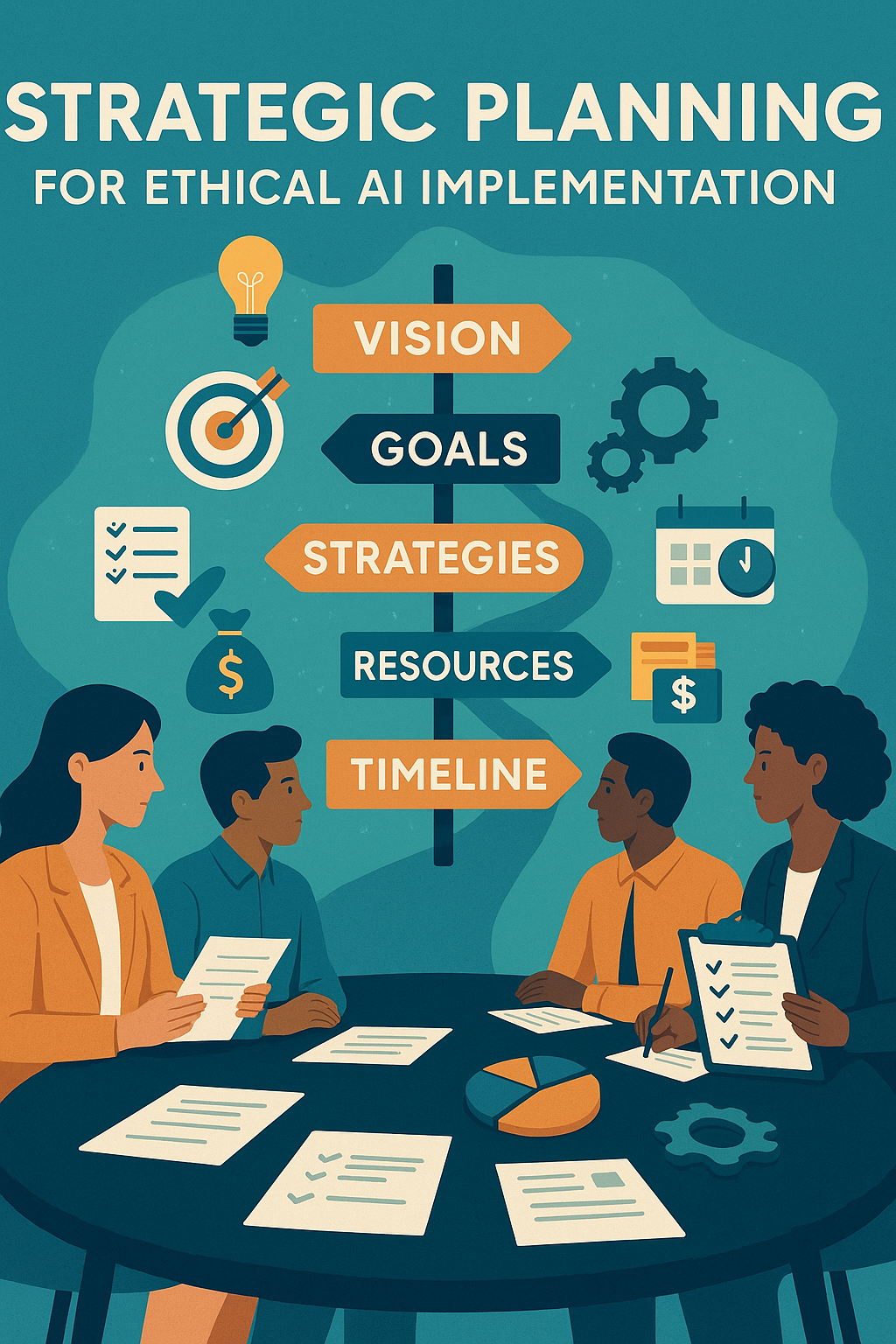
Governance Frameworks: Leveraging Platforms for Compliance
To make ethical AI practical and scalable, implementing a robust governance framework is key. Luckily, several platforms can streamline this process, offering features like:
Centralized Policy Management: Tools such as Airtable, a flexible and collaborative platform, allow you to create and manage AI governance policies in a structured manner, ensuring they are accessible and up-to-date.
Risk Assessment Workflows: Platforms can automate risk assessments, identifying potential ethical concerns early in the AI lifecycle. For example, you can use Zapier to connect different AI tools and automate the process of identifying and mitigating risks.
Monitoring and Auditing: These frameworks provide tools for continuously monitoring AI systems and auditing their performance against ethical guidelines. Some platforms include features like data lineage tracking, which helps you understand the origin and transformation of data used in your AI models, ensuring data quality and compliance.
By leveraging these platforms, you can move beyond ad-hoc ethical considerations and create a systematic approach to responsible AI development and deployment. Platforms such as IBM Watson Studio, can help develop, deploy, and manage AI models while ensuring ethical considerations are integrated throughout the process.
Establishing a solid ethical foundation isn't just a moral imperative; it's a strategic advantage. By aligning stakeholders and strategically planning for ethical AI implementation, you pave the way for innovation that's both powerful and responsible. Next, we'll explore the importance of data governance and privacy in ethical AI.
Data Strategy & Bias Management in AI Development
Imagine training a chef with only cookbooks from one country – their culinary skills would be severely limited. Similarly, an AI trained on biased data will perpetuate and amplify those biases. Therefore, building an ethical AI starts with a robust data strategy and proactive bias management.
Sourcing Representative Data to Minimize Bias
The foundation of any ethical AI system lies in the data it's trained on. If your data predominantly represents one demographic, geographical location, or viewpoint, the AI will inevitably reflect that skewed perspective. Think of it like this: if you only show an AI pictures of golden retrievers, it will struggle to identify a poodle. To overcome this, it's crucial to actively seek out representative data that reflects the diversity of the real world.
This means carefully considering the sources of your data. Are you relying solely on publicly available datasets? If so, examine their origins and potential biases. Supplement these with data from diverse sources, including:
Underrepresented communities: Actively engage with and collect data from communities that are often excluded from mainstream datasets.
Global sources: Expand your data collection efforts beyond your immediate geographical area to include data from different countries and cultures.
Multiple perspectives: Seek out data that represents a range of viewpoints and opinions on the subject matter.
By intentionally curating a more balanced and representative dataset, you can significantly reduce the risk of introducing bias into your AI system.
Automated Bias Detection Techniques
Even with the best intentions, biases can sometimes slip into your data. That's where automated bias detection techniques come in. These methods use algorithms to identify potential biases in your data by analyzing patterns and distributions. Think of them as a 'spell-check' for bias. Some common techniques include:
Statistical parity difference: This measures whether different groups have similar outcomes. For example, if a loan application AI approves loans at significantly different rates for different ethnic groups, this indicates a bias.
Equal opportunity difference: This examines whether different groups have an equal opportunity to benefit from a positive outcome.
Disparate impact analysis: This assesses whether a particular decision or policy disproportionately affects a specific group.
Tools like Google AI Studio, a platform for building and experimenting with generative AI models, often incorporate bias detection features that can help you identify potential issues in your models.
Manual Audits for Identifying and Mitigating Bias
While automated techniques are valuable, they are not foolproof. Manual audits are essential for uncovering more subtle and nuanced biases that algorithms might miss. This involves a human review of the data, the AI's outputs, and the decision-making processes. It's like having a human editor catch errors that a computer's spell-check couldn't.
During a manual audit, consider asking questions like:
Are there any stereotypes perpetuated in the data or the AI's outputs?
Are certain groups unfairly disadvantaged by the AI's decisions?
Is the AI's language or imagery inclusive and respectful of all groups?
By combining automated detection with human oversight, you create a more comprehensive approach to bias identification and mitigation. This can involve using tools like ChatGPT, an advanced language model, to analyze text for potential biases in language or sentiment.
Data Diversity and Inclusivity in AI Training Data
Beyond representation, data diversity and inclusivity are about actively ensuring that the data reflects the richness and complexity of the real world. This means going beyond simply including different demographic groups and considering factors like:
Intersectionality: Recognizing that individuals belong to multiple groups (e.g., race, gender, class) and that their experiences are shaped by the intersection of these identities.
Cultural context: Understanding that data is always situated within a specific cultural context and that interpretations can vary across cultures.
Linguistic diversity: Ensuring that the data includes a range of languages and dialects to avoid bias towards dominant languages.
By embracing data diversity and inclusivity, you can build AI systems that are more equitable, fair, and representative of the world we live in.
Bias Mitigation Tools: Comparing Top Tools for Bias Reduction
Several AI tools can assist in reducing bias during AI development. Here's a brief comparison:
Tool | Description | Key Features |
|---|---|---|
Fairlearn | A Python package that helps assess and mitigate fairness issues in machine learning models. | Bias detection metrics, model re-weighting, and post-processing techniques. |
AI Fairness 360 | An open-source toolkit developed by IBM that provides a comprehensive set of fairness metrics and bias mitigation algorithms. | Metric calculation, bias mitigation algorithms, and visualizations. |
What-If Tool | A visual interface that allows you to explore the behavior of your machine learning models and identify potential fairness issues. | Interactive data exploration, model performance analysis, and fairness metric visualization. |
Responsible AI Toolbox | A comprehensive toolkit designed to help you implement responsible AI practices throughout the development lifecycle, including assessing fairness, understanding explainability. | Model analysis, fairness assessment, and explainability insights. Integrated with Azure Machine Learning. |
These tools offer different strengths, so the best choice depends on your specific needs and technical expertise.
By prioritizing data strategy and bias management, we can move towards a future where AI is not just intelligent but also ethical, fair, and beneficial for all. The journey toward ethical AI is ongoing, requiring constant vigilance, learning, and adaptation. Embracing these practices ensures that AI serves humanity in a just and equitable manner, building a future we can all be proud of. This commitment to ethical practices is vital for maintaining trust and fostering innovation in the rapidly evolving field of AI News.
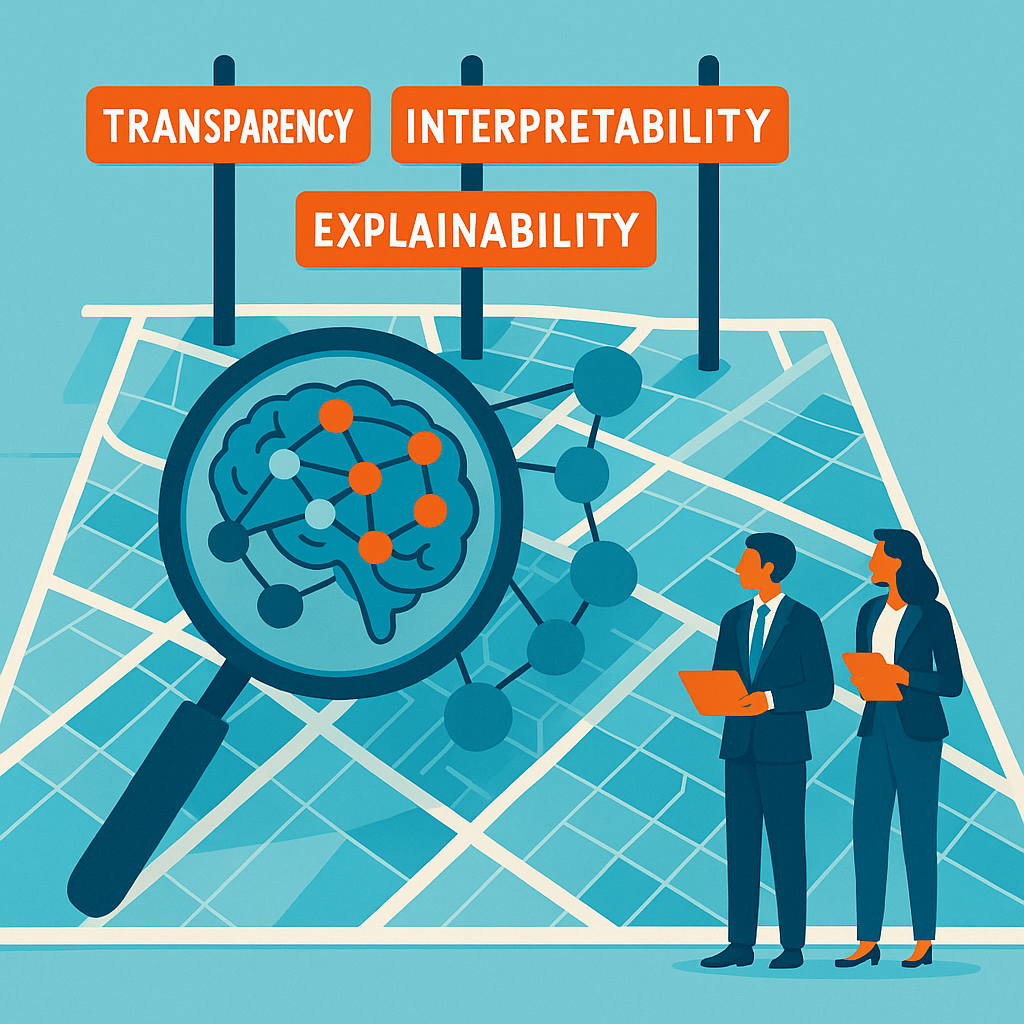
Model Development & Explainability: Making AI Transparent
Imagine trying to navigate a city without a map or street signs – that's what it's like trying to understand AI without transparency. When building ethical AI, making your models understandable is paramount, because trust erodes when people can't grasp how AI arrives at its decisions.
The Power of Interpretable Algorithms
One of the most fundamental steps toward transparent AI is selecting the right type of model from the outset. Instead of always reaching for the most complex neural network, consider whether a more inherently interpretable algorithm might suffice. Think of it as choosing a glass-walled building over a black box; you want to see what's happening inside.
Linear Regression: This classic statistical method not only predicts outcomes but also reveals the weight or influence of each input variable. It’s like having a recipe where you know exactly how much each ingredient contributes to the final dish.
Decision Trees: These models create a flowchart-like structure, making decisions based on a series of simple “if-then-else” rules. They’re easy to visualize and explain, almost like a troubleshooting guide for machines.
Rule-Based Systems: These systems operate based on explicit, human-defined rules. Their transparency is inherent, as every decision can be traced back to a specific rule.
Of course, not every problem can be solved with these simpler models. But when they are suitable, they offer a significant advantage in terms of explainability. Consider tools like TensorFlow, an open-source machine learning platform that offers support for various interpretable models and resources to build custom solutions.
Integrating Explainable AI (XAI) Libraries
When complex models are unavoidable, Explainable AI (XAI) libraries become your best friend. These toolkits are designed to peek inside the “black box” and shed light on how these models work. They're like having X-ray vision for your AI.
SHAP (SHapley Additive exPlanations): SHAP values break down a prediction to show the contribution of each feature. Think of it as dissecting a cake to see how much each ingredient (flour, sugar, eggs) contributed to the taste.
LIME (Local Interpretable Model-Agnostic Explanations): LIME explains individual predictions by approximating the complex model with a simpler, interpretable one locally. It's like zooming in on a small part of the map to see the local streets, even if you can't see the whole world at that level of detail.
ELI5: This library provides various methods to explain the predictions of machine learning classifiers. It aims to provide explanations that are easy to understand – hence the name.
By integrating these libraries, you can start to answer crucial questions about your AI's behavior. Why did the model make this particular prediction? Which features were most influential? Are there any hidden biases or unintended consequences?
Making AI Models More Transparent and Understandable
Beyond algorithm selection and XAI libraries, there are other strategies you can employ to enhance the transparency of your AI models. These techniques are like adding annotations and labels to a complex diagram to make it easier to follow.
Feature Importance Analysis: Identify which features have the most significant impact on the model's predictions. This is like figuring out which levers control a machine's behavior.
Model Visualization: Create visual representations of your model's decision-making process. For example, visualizing a decision tree or plotting the weights of a neural network. This turns abstract data into something tangible.
Documentation and Reporting: Maintain thorough records of your model's development, training, and performance. Include detailed explanations of the model's architecture, assumptions, and limitations. This acts as a complete user manual for your AI.
Transparency isn't just about revealing how AI works; it's about building trust and accountability. By making your models more understandable, you empower users to make informed decisions and hold the AI accountable for its actions.
Understanding How AI Models Arrive at Their Decisions
The ultimate goal is to truly understand why an AI model makes the decisions it does. This goes beyond simply knowing which features are important; it's about grasping the underlying logic and reasoning.
Imagine you're a detective trying to solve a case. You don't just want to know who committed the crime; you want to understand why they did it. Similarly, with AI, you need to dig deeper to uncover the motivations behind its choices.
Counterfactual Explanations: Explore how changing the input data would alter the model's predictions. This is like asking “What if?” questions to understand the model's sensitivity to different scenarios.
Causal Inference: Attempt to establish causal relationships between features and outcomes. This is a more rigorous approach to understanding the true drivers of the model's behavior.
Adversarial Testing: Intentionally try to “trick” the model with carefully crafted inputs. This can reveal vulnerabilities and biases that might not be apparent under normal circumstances.
XAI Toolkits: Reading User Reviews of XAI Tools
Choosing the right XAI toolkit is crucial, and reading user reviews can provide valuable insights. Platforms like Hugging Face host a variety of XAI tools, models, and libraries where users often share their experiences. Think of it like reading restaurant reviews before deciding where to eat; you want to know what other people think.
When reading reviews, look for comments on:
Ease of Use: Is the toolkit easy to install and use? Does it have clear documentation and helpful tutorials?
Performance: How well does the toolkit scale to large datasets and complex models? Is it computationally efficient?
Interpretability: Do the explanations provided by the toolkit make sense? Are they actionable and insightful?
Compatibility: Does the toolkit work with your existing machine learning frameworks and tools?
By carefully considering these factors, you can select an XAI toolkit that meets your specific needs and helps you build more transparent and trustworthy AI models.
In the quest for ethical AI, remember that transparency is not a luxury, but a necessity. By embracing interpretable algorithms, XAI libraries, and other transparency-enhancing techniques, you can build AI models that are not only powerful but also understandable, accountable, and trustworthy. This approach fosters broader acceptance and responsible innovation in AI.
Security, Privacy & Compliance: Navigating the Regulatory Landscape of AI
In the Wild West of AI innovation, it's easy to get caught up in the excitement and forget about the sheriff – in this case, security, privacy, and compliance. But ignoring these aspects is like building a house on sand; it might look impressive at first, but it won't stand the test of time. Let's explore the critical considerations for navigating the regulatory landscape of AI.
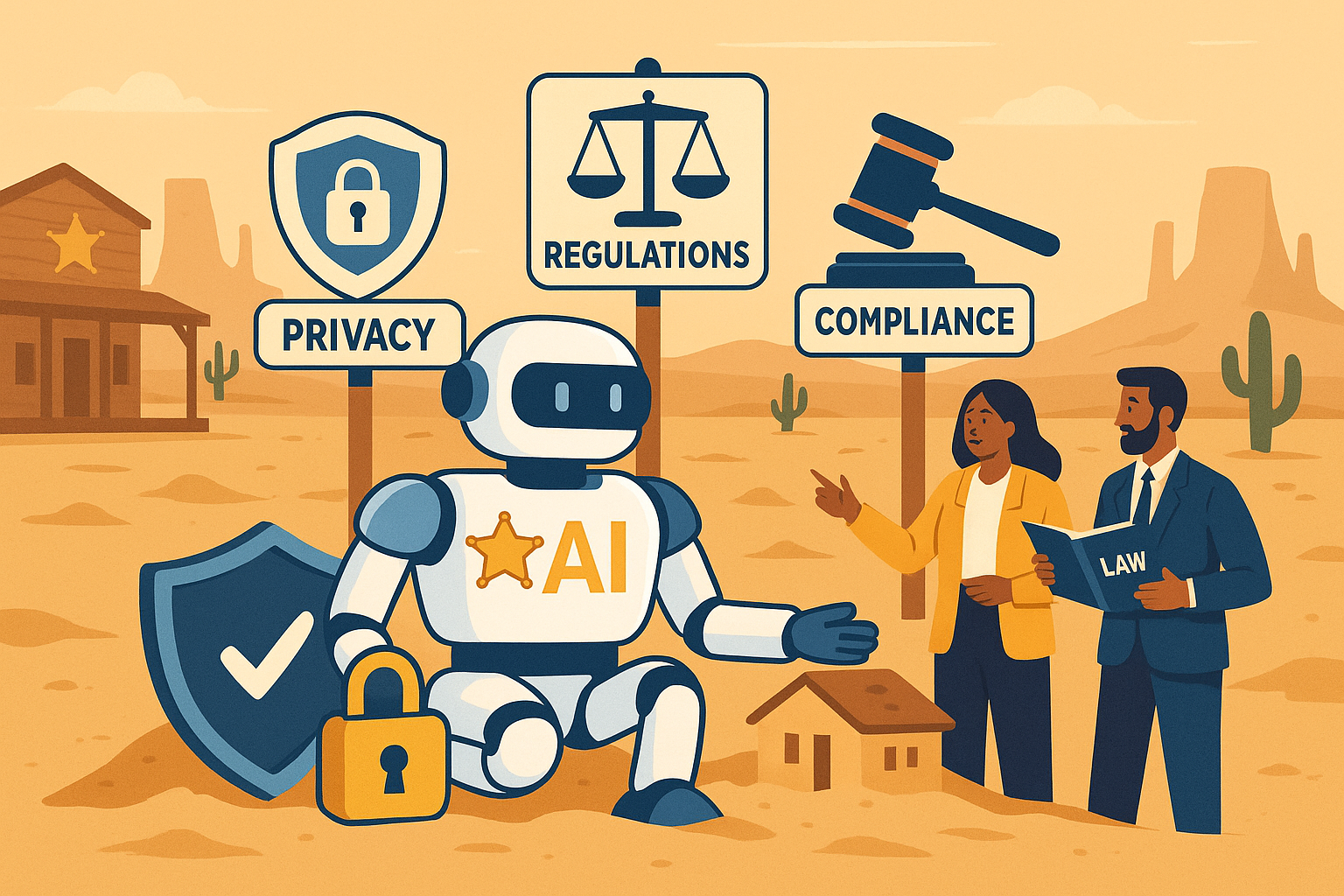
Shielding Data: The Art of Anonymization
Data is the lifeblood of AI, but it's also a potential minefield of privacy concerns. The more data an AI system has, the better it performs, but the more personal information it holds, the higher the risk of privacy breaches. That's where data anonymization techniques come in. These techniques transform sensitive data into a form that's no longer directly identifiable, protecting individuals' privacy while still allowing AI systems to learn and function effectively. Here are a few common approaches:
Masking: Replacing sensitive data with generic values, like substituting names with "Customer A" or "Employee B."
Aggregation: Combining data points to create summary statistics, such as calculating the average age of users instead of storing individual ages.
Pseudonymization: Replacing identifying information with pseudonyms, which can be reversed under controlled circumstances (e.g., for auditing purposes). This is different from anonymization, which is irreversible. For example, a medical study might use a code to link patient data without revealing their actual names.
Differential Privacy: Adding noise to the data to obscure individual records. This ensures that the presence or absence of any single individual in the dataset doesn't significantly affect the results.
These techniques act like cloaking devices for your data, making it harder for unauthorized parties to trace information back to individuals.
The Alphabet Soup: GDPR, CCPA, and Beyond
The regulatory landscape of AI is rapidly evolving, with new laws and guidelines emerging around the globe. Understanding and complying with these regulations is crucial for any organization deploying AI systems. Here's a quick rundown of some key players:
GDPR (General Data Protection Regulation): The gold standard for data protection in the European Union, the GDPR sets strict rules for the collection, processing, and storage of personal data. It also grants individuals significant rights over their data, including the right to access, rectify, and erase their information.
CCPA (California Consumer Privacy Act): Similar to the GDPR, the CCPA gives California residents greater control over their personal data, including the right to know what information is being collected, the right to opt-out of the sale of their data, and the right to delete their data.
Beyond these, there are a growing number of AI-specific regulations being developed worldwide. For example, the EU AI Act aims to establish a legal framework for AI, categorizing AI systems based on their risk level and imposing specific requirements for high-risk applications. Keeping up with these evolving regulations can feel like trying to drink from a firehose, but it's essential for avoiding costly penalties and maintaining public trust.
Walking the Tightrope: Ensuring Compliance
Compliance isn't just about ticking boxes; it's about building trust with your users and stakeholders. It involves implementing policies, procedures, and technologies to ensure that your AI systems adhere to relevant data protection laws and ethical guidelines. Here's a practical guide:
Conduct a Data Protection Impact Assessment (DPIA): Before deploying an AI system, assess its potential impact on privacy and data security. Identify any risks and implement appropriate safeguards.
Implement a Privacy-Enhancing Technology (PET): Use tools and techniques to minimize the collection and processing of personal data. Consider using RemoveBG, an AI tool which automatically removes image backgrounds with a single click, for tasks where you need to process images without identifying the subjects.
Establish Clear Data Governance Policies: Define roles and responsibilities for data management, access control, and incident response. Ensure that employees are trained on data protection principles and procedures.
Provide Transparency and Control: Be transparent about how your AI systems use personal data. Give users the ability to access, correct, and delete their information. Clearly explain how their data is used and give them choices about how it is shared.
Regularly Audit Your Systems: Conduct regular audits to ensure that your AI systems are compliant with data protection laws and ethical guidelines. Identify any gaps and implement corrective actions.
Fort Knox for AI: The Importance of Data Security
Imagine building a state-of-the-art AI system, only to have it compromised by a data breach. The consequences could be devastating, ranging from financial losses and reputational damage to legal liabilities and loss of customer trust. That's why data security is paramount in AI systems. You need to protect your data from unauthorized access, use, disclosure, disruption, modification, or destruction. Here are some best practices:
Encryption: Encrypt data both in transit and at rest. This makes it unreadable to unauthorized parties, even if they gain access to your systems.
Access Controls: Implement strict access controls to limit who can access your data. Use role-based access control (RBAC) to grant permissions based on job functions.
Intrusion Detection and Prevention Systems: Deploy security tools to monitor your systems for suspicious activity and prevent unauthorized access.
Vulnerability Management: Regularly scan your systems for vulnerabilities and patch them promptly. Stay up-to-date on the latest security threats and implement appropriate countermeasures.
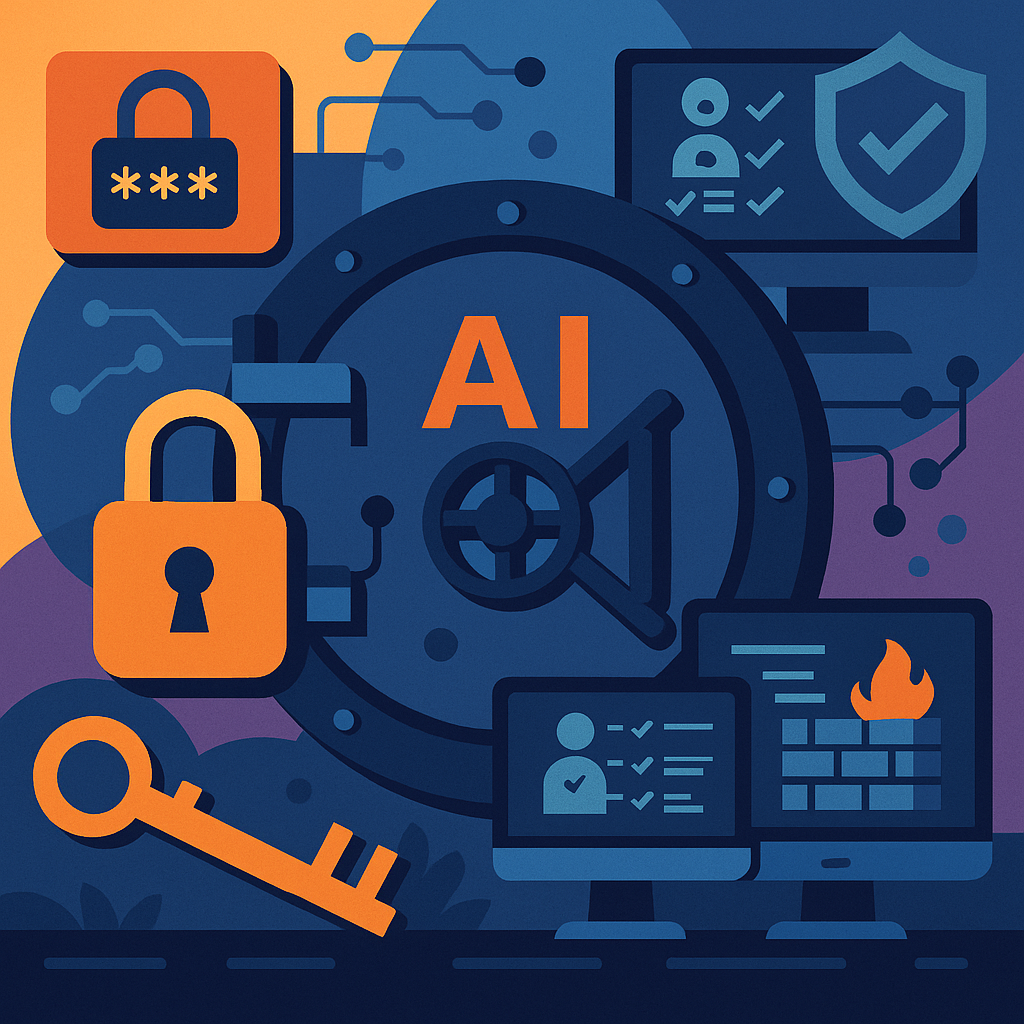
Navigating the Compliance Maze: Finding the Right Solutions
Staying on top of the ever-changing regulatory landscape can feel overwhelming. Thankfully, there are compliance solutions available to help. These solutions can automate many of the tasks involved in data protection and compliance, such as data discovery, risk assessment, and reporting. While we don't have a compliance solution directory per se, exploring the broader landscape of AI tools can lead you to specialized platforms designed for specific compliance needs within your industry. Many data governance and security platforms offer features specifically tailored to help organizations meet GDPR, CCPA, and other regulatory requirements.
In conclusion, security, privacy, and compliance are not just legal obligations; they are ethical imperatives. By prioritizing these aspects, you can build AI systems that are not only innovative and effective but also trustworthy and responsible. And in the long run, that's the key to unlocking the full potential of AI for the benefit of society. Keeping yourself updated with AI news will also help you stay on top of compliance needs.
Testing, Validation & Monitoring: Ensuring Ongoing Ethical Performance
Ethical AI isn't a 'set it and forget it' endeavor; it's an ongoing commitment that demands vigilance. Implementing robust testing, validation, and monitoring practices are critical to ensuring your AI systems continue to perform ethically throughout their lifecycle.
Continuous Fairness Testing
Imagine you've built a loan application AI. You rigorously tested it for fairness during development, ensuring it didn't discriminate against any demographic. But what happens when new data streams in, or the model subtly drifts over time? This is where continuous fairness testing in production comes in. It's like having a built-in ethical auditor that constantly evaluates the AI's decisions in real-time. This involves:
Defining Key Fairness Metrics: Determine what fairness means in your specific context. Is it equal opportunity? Demographic parity? Use established metrics to quantify fairness.
Automated Testing Frameworks: Implement automated tests that regularly assess the AI's output against your defined fairness metrics. These tests should run on production data to reflect real-world scenarios.
Regular Reporting and Analysis: Generate reports that highlight any discrepancies or potential biases. Analyze these reports to understand the root cause of the issues and take corrective action.
By continuously monitoring fairness, you can catch and address issues before they cause harm or erode trust in your AI systems. You might even leverage tools like Weights & Biases, a platform for tracking and visualizing machine learning experiments, which can be adapted to monitor fairness metrics over time.
Anomaly Alerts for Unexpected Behavior
AI systems, especially complex neural networks, can sometimes exhibit unexpected behavior. These anomalies might indicate a bug, a data quality issue, or even an emerging bias. Setting up anomaly alerts is like installing a security system for your AI, warning you of potential problems before they escalate. Consider these steps:
Establish Baseline Performance: Define what constitutes "normal" behavior for your AI system. This could include metrics like accuracy, response time, or resource consumption.
Configure Thresholds: Set appropriate thresholds for your metrics. When the AI's performance deviates significantly from the baseline, an alert is triggered.
Investigate and Remediate: When an alert is triggered, promptly investigate the issue. This might involve analyzing logs, examining data samples, or retraining the model.
Imagine an AI-powered customer service chatbot suddenly starts giving nonsensical or offensive responses. An anomaly alert could flag this immediately, allowing you to intervene and prevent further damage. Tools like Outlier AI, which specializes in automated anomaly detection, can be particularly useful in this context.
Validating AI Model Performance and Reliability
Before deploying any AI model, thorough validation is essential. This involves evaluating its performance on diverse datasets, assessing its robustness to noisy or incomplete data, and ensuring it meets the required reliability standards. However, this validation process does not end with the initial deployment. Regular re-validation is necessary to ensure sustained performance.
Diverse Datasets: Use multiple datasets that represent the real-world scenarios your AI system will encounter. This helps identify potential biases or weaknesses.
Stress Testing: Subject the AI model to extreme conditions or edge cases to assess its resilience. This can reveal vulnerabilities that might not be apparent under normal operating conditions.
Regular Benchmarking: Continuously evaluate the AI's performance against established benchmarks to track its progress and identify any degradation over time.
Monitoring AI Systems for Bias and Discrimination
Even with careful development and validation, AI systems can still exhibit bias and discrimination in production. This is often due to subtle interactions between the model, the data, and the real-world environment. Continuous monitoring is crucial to detect and mitigate these issues. Important considerations include:
Demographic Analysis: Track the AI's performance across different demographic groups to identify disparities. If you are using AI for hiring, make sure that protected classes are not being unfairly impacted.
Explainable AI (XAI) Techniques: Use XAI techniques to understand how the AI is making decisions. This can help uncover hidden biases or discriminatory patterns. Tools like Hugging Face, a leading open-source platform, offer various XAI libraries and resources.
Feedback Loops: Establish mechanisms for users to report potential biases or discriminatory outcomes. This feedback can be invaluable in identifying and addressing real-world issues.
Monitoring Dashboards: Gaining Comprehensive Insights
To effectively manage and monitor AI systems, consider using dedicated monitoring dashboards. These dashboards provide a centralized view of key performance indicators, fairness metrics, and anomaly alerts. They empower teams to proactively identify and address potential issues.
Customizable Visualizations: Design visualizations that highlight the most important metrics for your specific AI system. Use charts, graphs, and tables to present data in a clear and intuitive way.
Real-time Alerts: Configure real-time alerts that notify you of critical issues, such as fairness violations or performance degradation.
Drill-down Capabilities: Provide the ability to drill down into the data to understand the root cause of any issues.
Investing in robust testing, validation, and monitoring practices is not just a matter of ethical compliance; it's also a key to building trustworthy and reliable AI systems. By continuously monitoring your AI, you can ensure it remains aligned with your ethical principles and delivers value to your stakeholders.
By establishing these ongoing monitoring strategies, you create a proactive environment that catches and addresses ethical concerns, maintaining the integrity of your AI systems and fostering trust in their deployment. This proactive approach is vital for long-term success and responsible innovation in the field of AI.

Governance, Documentation & Audit Trails: Maintaining Ethical AI Standards
In the Wild West of AI innovation, it’s easy to get caught up in the thrill of new capabilities, but neglecting ethical guardrails can lead to disaster. Robust governance, meticulous documentation, and clear audit trails are crucial for maintaining ethical AI standards and ensuring that your AI systems remain aligned with your values and legal obligations.
AI Model Cards: Documenting the Blueprint
Think of an AI "model card" as the architectural blueprint for your AI system. It's a comprehensive document that outlines everything from the model's intended use and training data to its performance metrics and potential biases. This documentation is critical for several reasons:
Transparency: Model cards provide stakeholders with a clear understanding of how the AI system works, its limitations, and potential risks.
Reproducibility: They enable researchers and developers to replicate and validate the model's performance.
Accountability: By documenting the design and development process, model cards help establish accountability for the AI system's behavior.
Imagine building a house without a blueprint. You might end up with a structurally unsound building or one that doesn't meet the needs of its occupants. Similarly, deploying an AI system without a model card is like navigating uncharted waters without a map.
For example, if you are using ChatGPT, a powerful tool known for its ability to generate human-like text, your model card should detail the specific version of the model used, the data it was trained on, and any known limitations in its ability to generate accurate and unbiased content.
Fortunately, you don't have to start from scratch. You can download an open-source model card template to get a head start. These templates provide a standardized framework for documenting your AI systems and ensure that you capture all the essential information.
Periodic Ethics Reviews: A Regular Check-Up
AI systems are not static; they evolve over time as they are exposed to new data and retrained. That’s why it's essential to conduct periodic ethics reviews to assess whether the AI system continues to align with your ethical principles and legal requirements. These reviews should involve a multidisciplinary team with expertise in AI ethics, law, and the relevant domain.
During an ethics review, the team should:
Re-evaluate the model card to ensure it accurately reflects the current state of the AI system.
Assess the model's performance on fairness and bias metrics.
Examine the AI system's impact on stakeholders, including users, customers, and the broader community.
Identify any new risks or unintended consequences that may have emerged since the last review.
For example, if you are using Grammarly, an AI-powered writing assistant that helps users improve their grammar and style, an ethics review might examine whether the tool exhibits any bias in its suggestions, such as favoring certain writing styles or dialects over others.
Audit Trails: Following the Decision-Making Process
In critical applications, it's crucial to have a clear audit trail that documents the AI system's decision-making process. This audit trail should capture:
The data inputs used by the AI system.
The AI system's reasoning process.
The AI system's output or decision.
The rationale behind the decision.
Think of an audit trail as a flight recorder for your AI system. It provides a detailed record of what happened, why it happened, and who was responsible. This information is invaluable for investigating errors, identifying biases, and ensuring compliance with regulations.
For instance, if you're using Salesforce Platform to make automated decisions about loan applications, the audit trail should document the factors that the AI system considered when approving or denying each application, as well as the weight given to each factor. This allows auditors to verify that the decisions are fair, transparent, and non-discriminatory.
Accountability and Transparency: Cornerstones of AI Governance
Ultimately, effective AI governance hinges on accountability and transparency. You need to establish clear lines of responsibility for the AI system's design, development, deployment, and ongoing monitoring. This includes identifying who is accountable for:
Ensuring the AI system's ethical behavior.
Addressing any complaints or concerns raised by stakeholders.
Implementing corrective actions when necessary.
Furthermore, you need to be transparent about how the AI system works and how it's being used. This includes:
Providing users with clear explanations of the AI system's decisions.
Disclosing any potential risks or limitations associated with the AI system.
Being open to feedback and engaging in dialogue with stakeholders.
By embracing accountability and transparency, you can build trust in your AI systems and ensure that they are used in a responsible and ethical manner. This not only protects your organization from legal and reputational risks but also fosters a culture of innovation and collaboration.
By proactively addressing governance, documentation, and audit trails, organizations can lay a strong foundation for responsible AI implementation, mitigating risks and fostering a culture of ethical innovation. Now that we've established the importance of these safeguards, let's explore the critical role of human oversight and intervention in maintaining ethical AI systems.
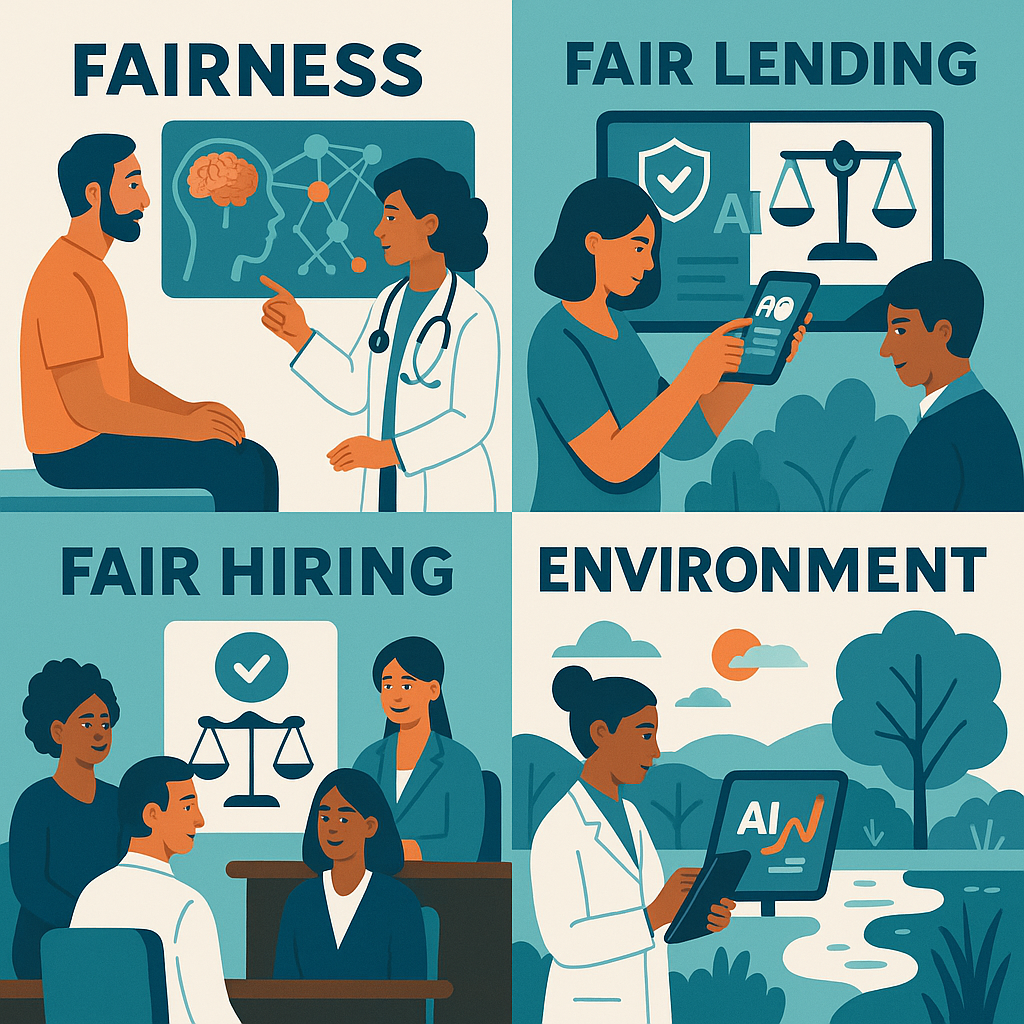
Real-World Case Studies: Ethical AI in Practice
Ethical AI isn't just a theoretical concept; it's a tangible force reshaping industries and driving positive change. Let's explore some real-world examples of how ethical AI principles are being put into practice, showcasing both the challenges and the triumphs.
Banking: Leveling the Playing Field with Fair Lending Algorithms
In the world of finance, AI is increasingly used to assess credit risk and determine loan eligibility. However, traditional lending algorithms can inadvertently perpetuate existing biases, denying opportunities to underserved communities. Ethical AI offers a solution by focusing on fairness and transparency in lending practices.
The Challenge of Bias: Historical data often reflects societal inequalities, leading AI models to unfairly discriminate based on factors like race or zip code.
Implementing Fairness Metrics: Banks are now employing techniques to measure and mitigate bias in their algorithms. This includes using fairness metrics like equal opportunity and demographic parity to ensure that loan decisions are equitable across different groups.
Explainable AI (XAI): Banks are also turning to XAI to understand how their AI models make decisions. By making the decision-making process more transparent, they can identify and correct any biases that may be present.
One of the most compelling success stories comes from a regional bank that redesigned its lending algorithm using ethical AI principles. By carefully selecting input variables and incorporating fairness constraints, they were able to increase loan approvals for minority applicants by 25% without increasing their overall risk.
This demonstrates that ethical AI can not only promote fairness but also unlock new business opportunities by expanding access to credit for previously excluded populations. To dive deeper into specific AI applications, explore how tools like Salesforce Platform can be used to implement and monitor ethical AI practices in finance.
Healthcare: Building Bias-Free Diagnostic Models
AI is revolutionizing healthcare, from diagnosing diseases to personalizing treatment plans. However, the potential for bias in diagnostic models is a serious concern. If AI models are trained on data that doesn't accurately represent the diversity of the population, they can produce inaccurate or unfair results.
The Risk of Unequal Representation: AI models trained on limited or biased datasets can lead to misdiagnosis or ineffective treatment for certain groups, exacerbating existing health disparities.
Data Diversity and Augmentation: To address this issue, healthcare organizations are actively working to improve the diversity of their training data. This includes collecting data from a wide range of populations and using data augmentation techniques to create synthetic data that fills in gaps in the existing dataset.
Algorithmic Auditing: Regular auditing of AI models is essential to ensure that they are performing fairly and accurately across all patient demographics. These audits can help identify and correct any biases that may be present in the model.
Real-World Examples of Ethical AI in Action
Detecting Skin Cancer: A study published in Nature Medicine showed that an AI model trained on a diverse dataset of skin images was able to detect skin cancer with comparable accuracy across different skin tones. This is a significant improvement over previous models, which were often less accurate on darker skin tones.
Predicting Heart Disease: Researchers at a leading medical center developed an AI model to predict the risk of heart disease. By carefully selecting input variables and using fairness constraints, they were able to create a model that performed accurately across different racial and ethnic groups.
These examples illustrate the power of ethical AI to improve healthcare outcomes for all patients. For example, tools like Google Cloud AI offer capabilities for building and deploying AI models with fairness and transparency in mind.
Success Stories of Responsible AI Implementation
The following examples highlight the transformative impact of responsible AI implementation across different sectors:
Improved Customer Service: A telecommunications company implemented an AI-powered chatbot to handle customer inquiries. By training the chatbot on a diverse dataset of customer interactions and incorporating fairness metrics, they were able to provide more equitable and personalized service to all customers, regardless of their background or language.
Enhanced Cybersecurity: A financial institution used AI to detect and prevent fraudulent transactions. By carefully selecting input variables and regularly auditing the AI model, they were able to reduce fraud rates without disproportionately impacting any particular group of customers.
These success stories demonstrate that ethical AI is not just a nice-to-have; it's a strategic imperative for organizations that want to build trust, mitigate risk, and drive sustainable growth. By embracing ethical AI principles, organizations can create a more just and equitable world for all.
As AI continues to evolve, the importance of ethical considerations will only grow. By learning about the AI fundamentals and staying informed about the latest developments in the field through AI News, we can all play a part in shaping a future where AI is used for good.
Continuous Improvement & Community: Fostering Ethical AI Development
Ethical AI isn't a destination; it's a journey of continuous learning and refinement. To truly foster ethical AI development, we must embrace feedback loops, engage with communities, and relentlessly improve our practices. Let's explore how.
The Power of User Feedback
Imagine your AI model as a student, constantly learning from the world around it. User feedback is its textbook, providing invaluable lessons on what works, what doesn't, and where improvements are needed. By actively soliciting and incorporating user feedback into retraining loops, we can ensure that our AI systems evolve in a way that aligns with human values and expectations. This is especially important, as highlighted in AI News, where the ethical implications of AI are frequently discussed.
Here's how to put this into practice:
Implement Feedback Mechanisms: Integrate user-friendly feedback options directly into your AI applications. Think simple thumbs up/thumbs down, short survey questions, or even a free-form text box for more detailed input.
Analyze and Categorize: Use AI-powered tools to analyze the incoming feedback, identify recurring themes, and prioritize areas for improvement. For example, if users consistently report biased outputs, that's a clear signal to revisit your training data and algorithms.
Retrain and Refine: Feed the analyzed feedback back into your model's training process. This could involve adjusting model parameters, augmenting the training dataset with new examples, or even re-evaluating the overall model architecture.
Iterate and Repeat: The process of gathering feedback, analyzing it, and retraining the model should be an ongoing cycle. Regularly monitor your AI system's performance and solicit fresh feedback to ensure it remains aligned with ethical principles.
By embracing user feedback, we transform our AI systems from static algorithms into dynamic learners, constantly adapting to the ever-evolving landscape of human values.
Engaging with the Best-AI-Tools.org Community
No one has all the answers when it comes to ethical AI. That's why community collaboration is so crucial. Platforms like the Best-AI-Tools.org community forum provide a valuable space for exchanging ideas, sharing best practices, and learning from the experiences of others.
Consider engaging in discussions about tools such as ChatGPT, a versatile AI tool known for its natural language processing capabilities, and how to use it ethically. You can also get insights on other AI tools like Google Gemini, a multimodal AI model, discussing responsible implementation and potential pitfalls.
Here's how you can leverage the community for ethical AI development:
Ask Questions: Don't be afraid to seek advice from other members of the community. If you're struggling with a particular ethical challenge, chances are someone else has faced a similar issue and can offer valuable insights.
Share Your Experiences: Contribute your own knowledge and experiences to the community. By sharing what you've learned, you can help others avoid common pitfalls and accelerate their ethical AI journey. For example, sharing experiences with Prompt Engineering techniques that minimize bias can be extremely helpful.
Participate in Discussions: Engage in thoughtful discussions on a wide range of ethical AI topics. This can help you broaden your perspective, challenge your assumptions, and develop a deeper understanding of the complexities involved.
Collaborate on Projects: Consider joining or initiating collaborative projects focused on ethical AI. Working together with other members of the community can lead to innovative solutions and accelerate the adoption of ethical AI practices.
Continuously Improving AI Ethics Practices
Ethical AI is not a one-time fix; it requires ongoing effort and commitment. We must continuously evaluate our AI systems, refine our processes, and adapt to the ever-evolving ethical landscape.
Regular Audits: Conduct regular audits of your AI systems to identify potential biases, vulnerabilities, and ethical concerns. These audits should involve a diverse team of experts, including ethicists, data scientists, and domain specialists.
Stay Informed: Keep abreast of the latest research, guidelines, and best practices in the field of AI ethics. Attend conferences, read academic papers, and follow thought leaders in the space.
Update Policies: Regularly review and update your AI ethics policies to reflect new insights and evolving societal values. These policies should be clear, comprehensive, and readily accessible to all stakeholders.
The Importance of Community Collaboration in Ethical AI
Ultimately, fostering ethical AI development is a collective responsibility. By working together, sharing our knowledge, and supporting one another, we can create a future where AI benefits all of humanity. The AI News section of Best-AI-Tools.org is a great place to stay informed and learn about ongoing community discussions.
Ethical AI is not a solo endeavor. It's a symphony of diverse voices, working together to create a harmonious future where AI empowers humanity and upholds our shared values.
By embracing continuous improvement and actively engaging with the community, we can pave the way for a more ethical and responsible AI ecosystem. This collaborative approach ensures that our AI systems are not only powerful but also aligned with the best interests of society, allowing us to fully harness the potential of AI for good.
Conclusion & Next Steps: Your Journey to Ethical AI Starts Now
The path to ethical AI isn't a destination; it's a continuous journey of learning, adapting, and improving. Think of it as tending a garden – you need to regularly nurture it, prune it, and protect it from weeds to ensure it flourishes. So, where do you begin right now?
Your Quick-Start Checklist for Ethical AI
Ready to take immediate action? Here's a concise checklist to get you moving toward responsible AI implementation:
Assess your current AI projects: Identify potential ethical risks in your existing AI applications. Are there biases creeping in? How transparent are your algorithms? Tools like GptZero, designed to detect AI-generated content, can provide insights into the origins and potential manipulations within your data.
Establish clear ethical guidelines: Create a comprehensive set of ethical principles tailored to your organization's values and AI use cases. Define acceptable data practices, transparency standards, and accountability measures.
Prioritize data privacy: Implement robust data protection measures to safeguard user privacy and comply with relevant regulations like GDPR or CCPA. Consider using privacy-enhancing technologies (PETs) to minimize data exposure.
Promote transparency and explainability: Strive for transparency in your AI systems by documenting algorithms, data sources, and decision-making processes. Employ techniques like SHAP values or LIME to explain AI predictions and recommendations.
Foster diversity and inclusion: Build diverse AI teams that represent a wide range of perspectives and backgrounds. This will help mitigate bias and ensure that AI systems are fair and equitable for all users.
Continuously monitor and evaluate: Regularly assess the ethical performance of your AI systems and make adjustments as needed. Establish feedback mechanisms to identify and address unintended consequences or emerging ethical concerns.
By taking these initial steps, you'll lay a strong foundation for ethical AI development and deployment within your organization.
Share Your Insights: Contribute to Our Community
At Best-AI-Tools.org, we believe that collective knowledge is key to advancing ethical AI. That's why we invite you to contribute your own ethical tool reviews and insights to our platform. Have you discovered a tool that promotes transparency, fairness, or accountability in AI? Share your experience and help others make informed decisions. You can submit your tool review here.
Taking the Next Steps Towards Responsible AI
The journey doesn't end with a checklist. It requires continuous learning and adaptation. Dive deeper into specific areas of interest, such as Prompt Engineering to ensure responsible and unbiased AI interactions, or explore our AI News section to stay up-to-date on the latest developments and ethical considerations in the field. Actively participate in industry discussions, attend workshops, and engage with experts to expand your knowledge and refine your ethical AI practices. Remember, staying informed is crucial in this rapidly evolving landscape.
Become an Ethical AI Champion
The future of AI depends on individuals and organizations committed to responsible innovation. By embracing ethical principles, promoting transparency, and fostering collaboration, you can become an ethical AI champion and help shape a future where AI benefits all of humanity. Let's work together to build a world where AI is not only powerful but also ethical, fair, and inclusive. Explore our Learn section to begin your transformation into an ethical AI champion. The time to act is now.
Keywords: Ethical AI roadmap, Responsible AI implementation, AI bias mitigation guide, Explainable AI best practices, AI governance frameworks, Data privacy in AI, AI compliance tools, Trustworthy AI systems, AI model monitoring, Best-AI-Tools.org ethical AI resources, Fairness in AI, Accountability in AI, Transparency in AI, AI Model Cards, AI ethics committee
Hashtags: #EthicalAI #ResponsibleAI #AIgovernance #AIethics #BestAITools
For more AI insights and tool reviews, visit our website https://best-ai-tools.org, and follow us on our social media channels!
Website: https://best-ai-tools.org
X (Twitter): https://x.com/bitautor36935
Instagram: https://www.instagram.com/bestaitoolsorg
Telegram: https://t.me/BestAIToolsCommunity
Medium: https://medium.com/@bitautor.de
Spotify: https://creators.spotify.com/pod/profile/bestaitools
Facebook: https://www.facebook.com/profile.php?id=61577063078524
YouTube: https://www.youtube.com/@BitAutor
Recommended AI tools
AI Undresser
Image Generation
Uncover the hidden truth
Credo AI
Data Analytics
The trusted leader in AI governance
Islam & AI
Conversational AI
Bridging Islam and Artificial Intelligence
Responsible AI Institute
Conversational AI
Empowering Ethical AI


